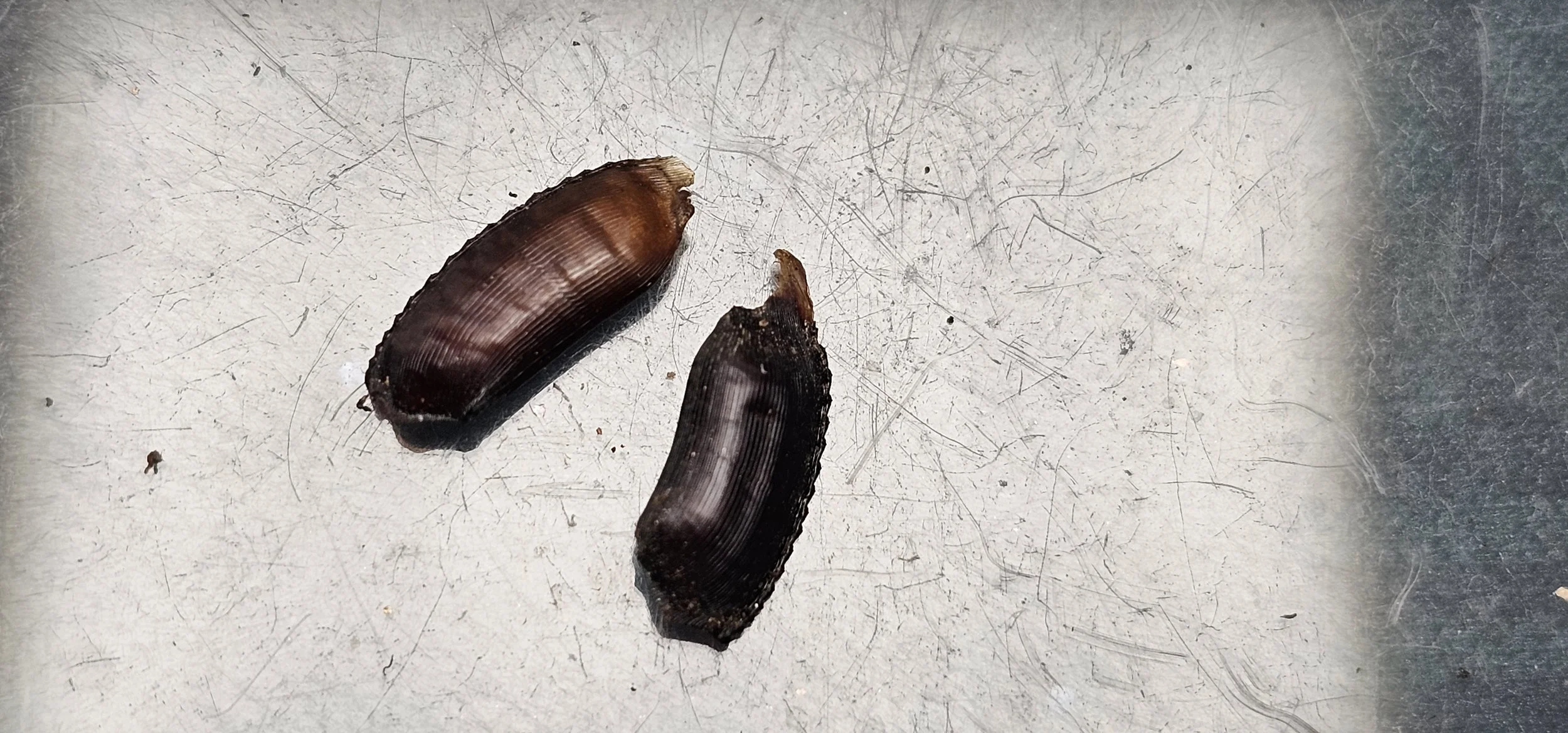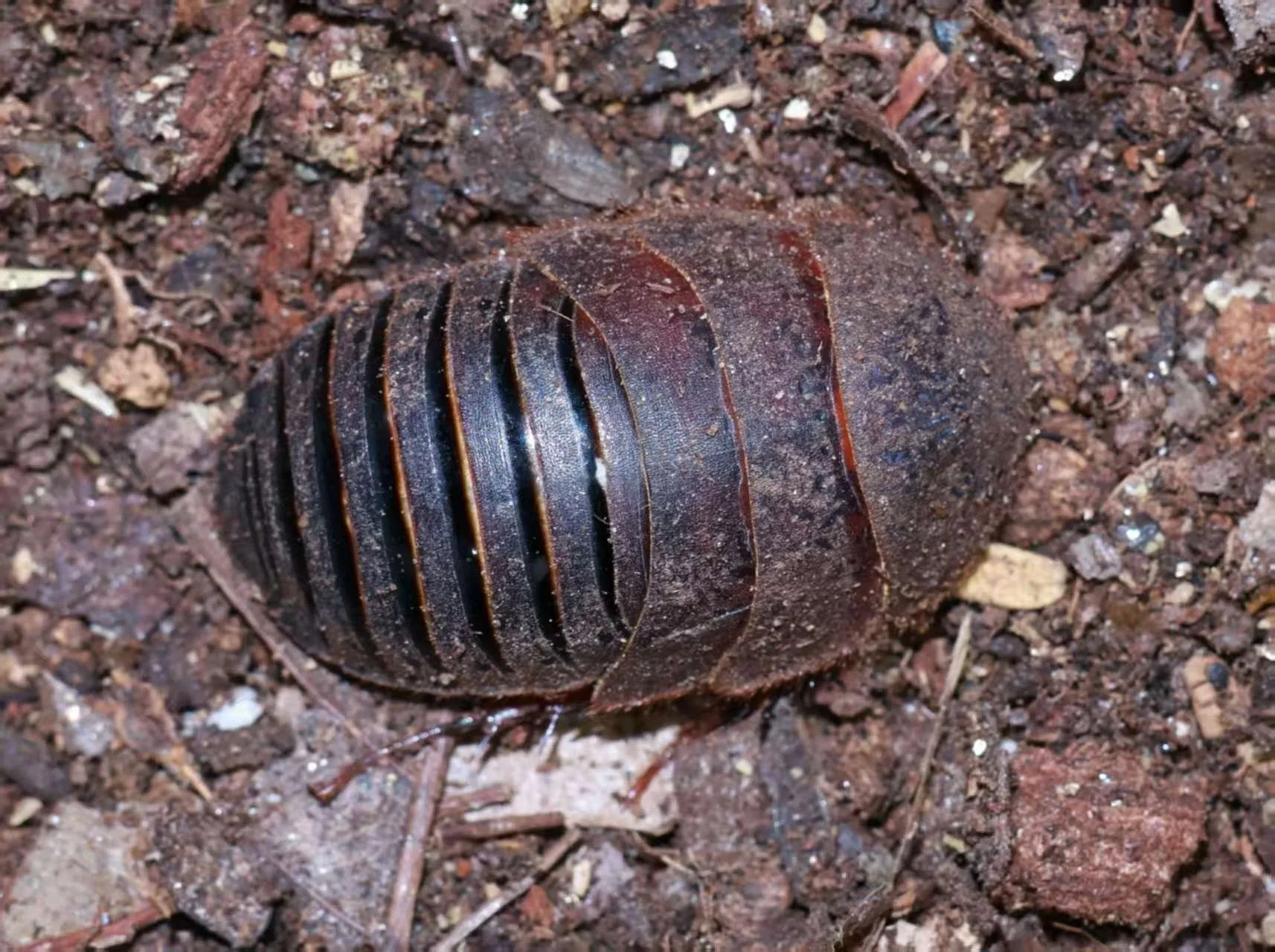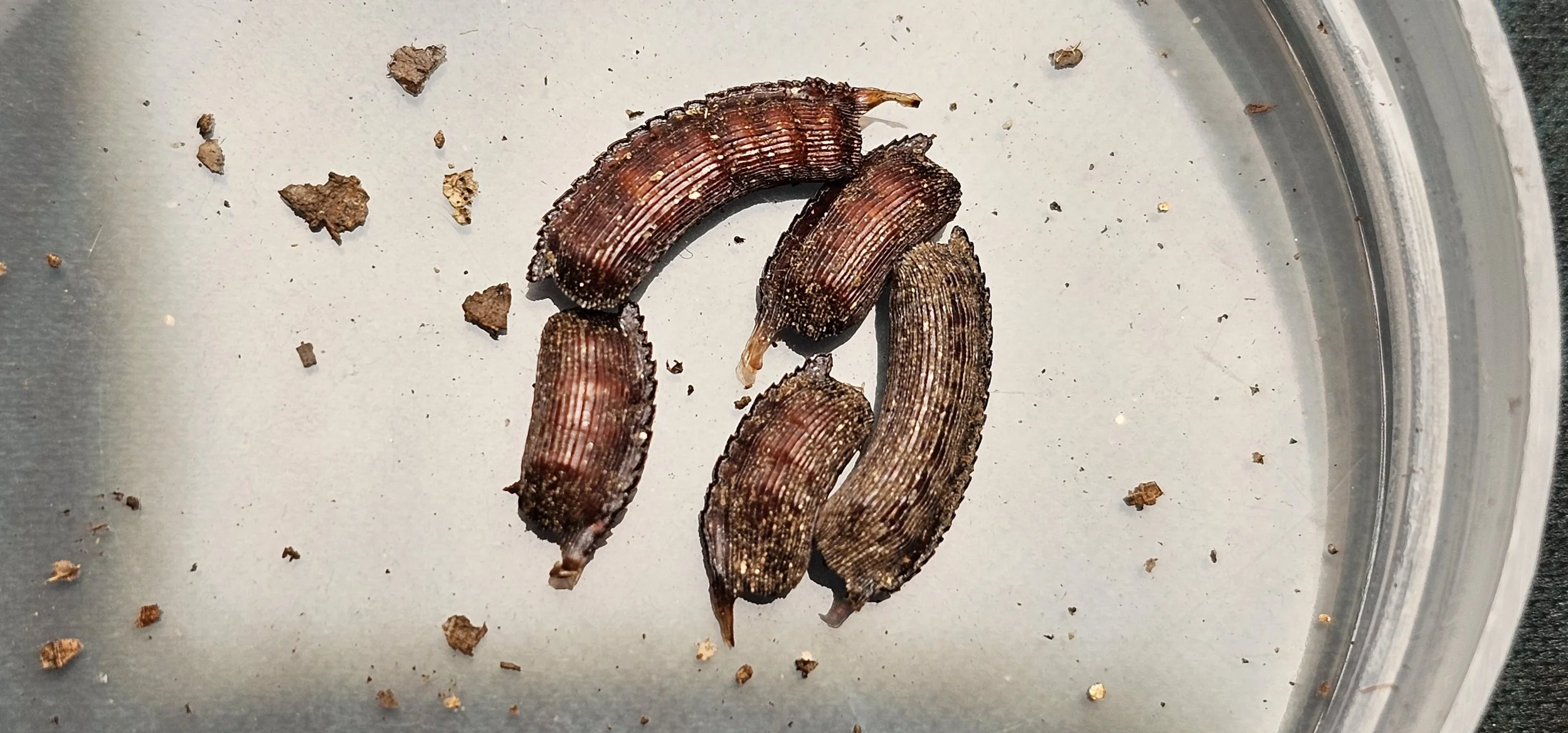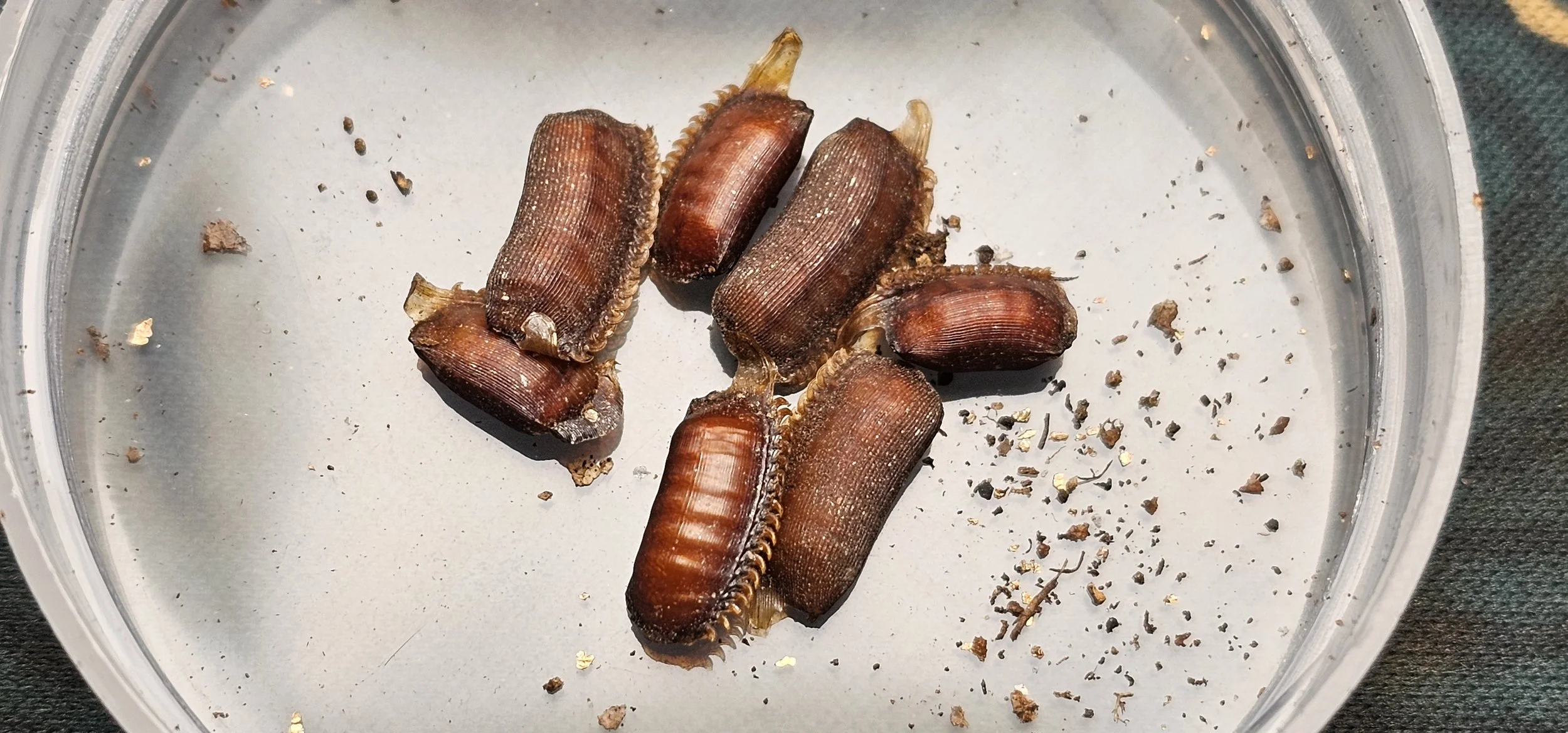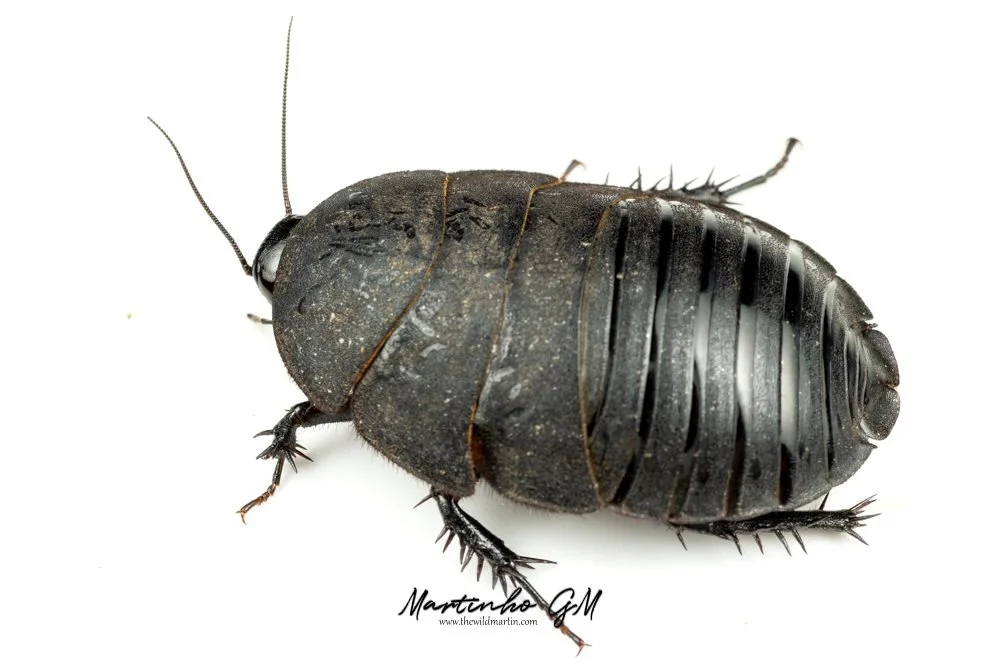Sand Roaches Overload!
Hope you all doing great! Came to share some exciting new additions to my collection! Just received 4 new Eupolyphaga species! Let’s go through what I got.
Lets look at the oothecas first! Unfortunately, no live individuals.
First species: Eupolyphaga sp. #1
Has photo record for the adult female and oothecas only. Unidentified species so far, with potential of being a new species.
Eupolyphaga sp. #1 oothecas
Eupolyphaga sp. #1 oothecas
This species is coming from Luding County, a county located in the southeast of the Garzê Tibetan Autonomous Prefecture in Sichuan province, China.
The next photo doesn’t belong to me, and it was provided with permission of usage from its owner.
感谢BengHuaiXg允许使用您的照片.
Eupolyphaga sp. #1 Adult Female (BengHuaiXg)
I only have 2 oothecas so hope I can make them hatch successfully. I will be keeping them inside a small deli cup with my loose dark substrate mix.
Second species: Eupolyphaga sp. #2
Few days ago, I had made a reference to a paper [1], which had the following description:
“This species can be found inside the dry loose earth around old houses, or in the broad-leaved forest; in the forest, they would like to live together in the tree holes, the humus in the holes is a little wet, but is loose enough for them to creep….”
There are only photo records for oothecas. Both males and females are unknow. The oothecas were found found under the woodpiles inside a small wood shelter next to the farm house, a little like the description above.
The reason for this is that the Chinese, consider this roach genus to be medicinal, and will collect the roaches and the woods from the forests and raise them near their homes and use them for their traditional medicine when necessary.
BengHuaiXg collected the oothecas in Shehong County. Shehong is a county-level city in the east part of Sichuan province, China.
Eupolyphaga sp. #2 oothecas
Eupolyphaga sp. #2 oothecas
I have 6 oothecas so hope I can make them hatch successfully. I will be keeping them separately in the same conditions I described earlier. I hope to be revisiting this post in 1 year or so and updating it with the novel identification information.
And now moving into the most interesting part!
Third species: Eupolyphaga udenostyla
This species was found in Luobuzhai Village, which is located on a high semi-mountain terrace at an altitude of more than 2,000 meters on the south bank of the Minjiang River in Yanmen Township, Wenchuan County. Wenchuan County is a county in Ngawa Tibetan and Qiang Autonomous Prefecture, Sichuan, China.
I have received 2 adult females and 4 of oothecas. Luckily, one of the adult females was carrying an ootheca upon its arrival.
Eupolyphaga udenostyla adult females
Eupolyphaga udenostyla adult female with ootheca
This species was described in 2022 in [2]
Diagnosis: “This species is remarkable for the absence of styli and the short tegmina and strongly reduced anal fields of hind wings in male, which can easily distinguish the males of E. udenostyla from all other species. The serrations of ootheca are distinctly reduced.”
Han W, Qiu L, Zhu J, Wang Z-Q, Che Y-L (2022)
Etymology: uden- (Greek) + styla (Greek) indicate that the males of the new species have no styli.
The type locality of the new species is close to the one of Eupolyphaga robusta, they are sympatric, distributed in Minjiang River Basin. Males and ootheca of this new species are easily distinguished from E. robusta, but females may be confused because of their similar black and large body. However, females of this new species have reduced ocelli (Fig. 4B), which are obviously smaller than those of E. robusta (Fig. 4A).
Eupolyphaga udenostyla oothecas
Eupolyphaga udenostyla oothecas
Eupolyphaga udenostyla adult female
Eupolyphaga udenostyla adult female
Super excited for this species. I really hope that these two females are mated and these oothecas are not duds.
I would love to see and photograph the males of this species! Wish me luck!
Fourth species: Eupolyphaga robusta
[1] Key to the male of Eupolyphaga species
3 Tegmina brown, only with several hyaline maculae, vertex of head yellow (Figs. 12 A; 13 N) . . . . . . . . . . . . . . . . . . . . . . .E. robusta
This species was described in 2018 by Qiu and all in [1].
Etymology: The species epithet “robusta” refers to its broad and thickened body.
Male: “Tegmina almost black, with a few white maculae, some individuals have more and larger maculae that are randomly distributed on tegmina. Abdomen orange or black, if black, the terminal two segments dimly yellowish. Pronotum: unicolored, brown, anterior margin narrowly whitish, the whitish part not reach to the lateral corners.”
Female: Body uniformly black.
Eupolyphaga robusta oothecas
Eupolyphaga robusta oothecas
Eupolyphaga robusta adult male and female
Eupolyphaga robusta adult male
Eupolyphaga robusta adult female
In total I received 1 adult male, 3 adult females, 1 female nymph and a good number of oothecas. To be honest, I wasn’t really excited about this species, I hadn’t made any previous research. But as soon as I saw they were this dark and black, and how good they look, i fell in love! Another species I am terribly excited for now! So hope I can ensure the continuity of this species in my collection!
Jesus! This really has been a Eupolyphaga overload the past couple of years!
If all goes well, you will be seeing these available!
Well, this is all for this post!
Hope you have enjoyed!
Thanks for reading, see on the next one!
Cheers! and Roach Love!
References:
[1] Lu Qiu & Che, Yan-Li & Zongqing, Wang. (2018). A taxonomic study of Eupolyphaga Chopard, 1929 (Blattodea: Corydiidae: Corydiinae). https://dx.doi.org/10.11646/zootaxa.4506.1.1
[2] Han W, Qiu L, Zhu J, Wang Z-Q, Che Y-L (2022) Exploring the diversity of Eupolyphaga Chopard, 1929 (Blattodea, Corydioidea): species delimitation based on morphology and molecular analysis. ZooKeys 1120: 67-94. https://doi.org/10.3897/zookeys.1120.87483
